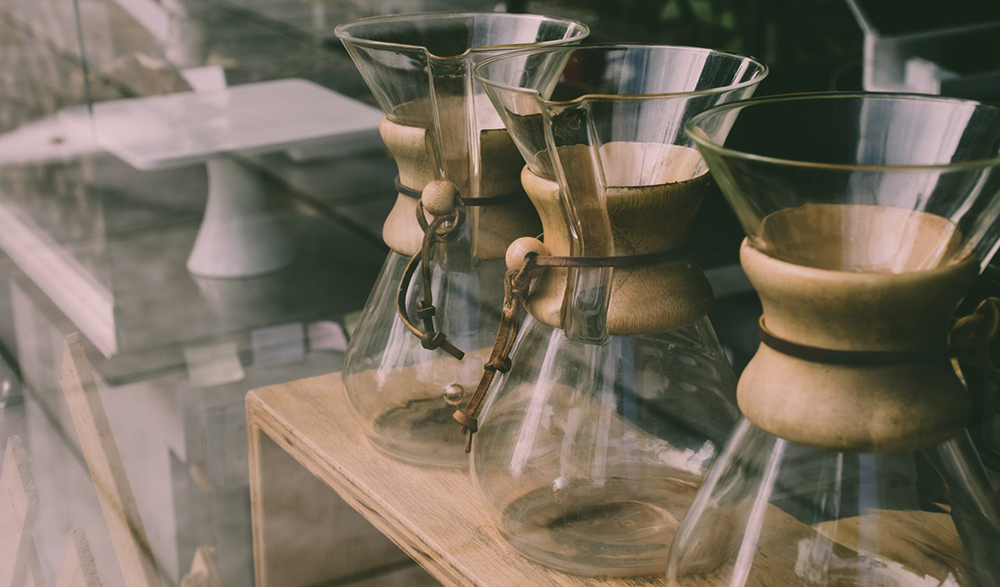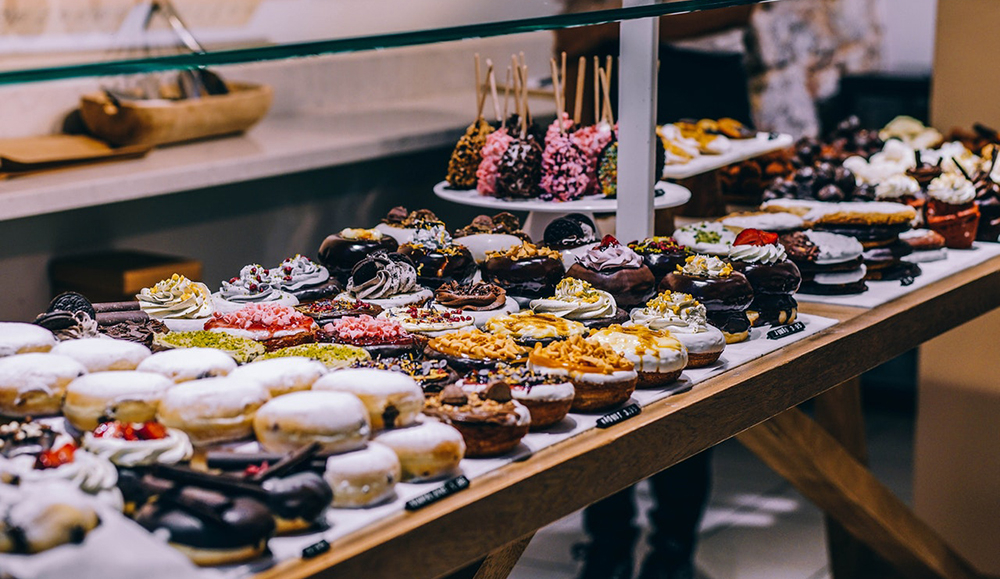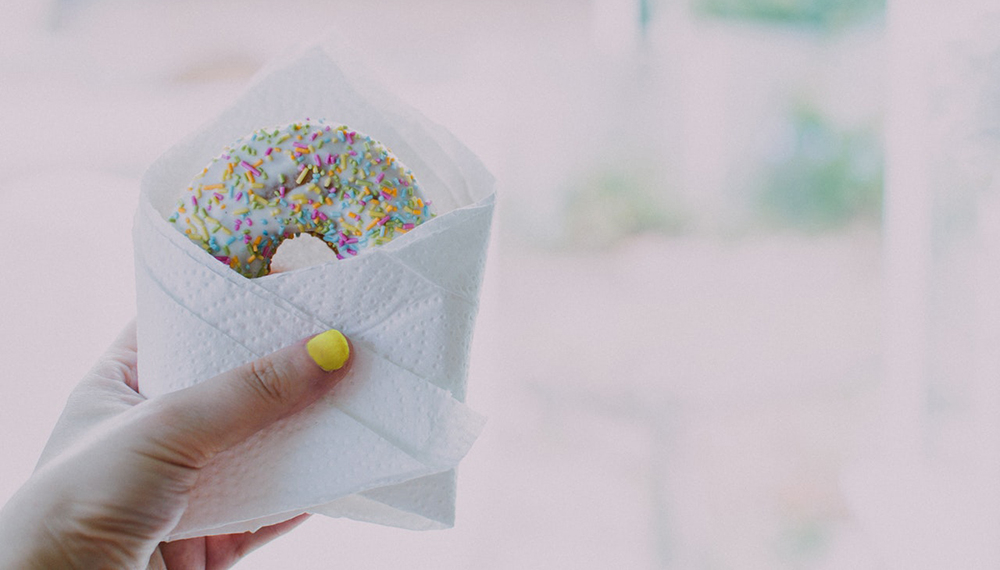What’s the most important part of planning a coffee shop? The menu. The drinks and food you serve are the backbone of your business. It’s important to get this part right.
What will you serve your customers? What additional items (if any) will you offer?
If you’re not sure what to sell in a coffee shop, visit your competitors to see what they offer. You may be surprised to find that coffee shops offer more than just a few simple coffee drinks.
The goal is to create a list of items you’ll need and to make a plan for your menu so that you have a blueprint to follow. You’ll also want to familiarize yourself with local food safety guidelines.

Items Needed to Start a Coffee Shop
Every coffee shop items list is different, but there are some basic products that every shop will need.
Coffee Shop Menu Items
Coming up with a menu for your coffee shop is a personal process, but if you’re just getting started, you may want to keep things as simple as possible.
It’s better to offer a dozen items that will really “wow” customers than to offer 25 mediocre items.
What are the best menu items for a coffee shop?
- Americano
- Pour-over
- Chai latte
- Moca
- Cappuccino
- Café au lait
- Espresso
- Macchiato
- Latte
- Breve
- Red eye
Most shops also offer flavor shots as well as a variety of “milk” options.
Here's the good news: the products list is pretty simple when it comes to coffee drinks. Here's a basic list of the items you’ll need to make most coffee drinks:
Coffee and Espresso
You’ll need coffee – and lots of it. Most coffee shops offer a variety of brews (light, medium, dark, specialty) and espresso.
Don’t rush this part. Find coffee that you love. Most shops find that it’s best to stick to single-origin coffees. High quality coffee brewed in high quality machines will render a superior cup that will sell your shop for you.
Sweeteners
While you’ll have a few customers that want a plain cup of coffee, most people prefer to add a sweetener of some kind. Offer customers a wide range of sweetener options to meet their needs. The most popular options include:
- White sugar
- Brown sugar
- Raw sugar
- Equal and Nutrasweet
- Splenda
- Sweet’n Low
- Maple syrup
- Honey
- Molasses
- Stevia
Depending on the local market, you may not need to offer this wide of a range of sweeteners. Maybe your customers aren’t really into putting molasses or stevia into their coffee.
If you’re not sure about a sweetener, consider buying a limited inventory and seeing how popular it is with customers.
Dairy and Non-Dairy Products
Many specialty coffee drink recipes call for steamed milk. Even with plain coffee, a large percentage of your customers will want creamer, plain milk or a non-dairy product.
Your list of dairy and non-dairy products might include:
- Cow’s milk: whole, skim, 2%, half and half
- Soy milk
- Almond milk
- Coconut milk
- Non-dairy creamer
- Goat’s milk
With a growing population of vegan and health-conscious coffee drinkers, it’s important to offer both dairy and non-dairy options to your customers.
Flavored Syrups and Chocolate/White Chocolate
Some customers prefer the pure taste of coffee; others like a shot of flavor in their cup. Your coffee shop should have at least a few flavored syrups on hand, such as:
- Vanilla
- Caramel
- Almond
- Hazelnut
Specialty options might include:
- Pumpkin
- Butterscotch
- Cherry
- Chestnut
- Maple
- Peppermint
- Raspberry
If you plan to offer mocha drinks, you’ll also want chocolate and white chocolate sauces.
Tea and Chai
If your coffee shop menu includes tea and chai drinks, you’ll need to decide which variety you’ll offer. Most shops carry a variety of tea brands. Remember that you’re not a tea shop, so it’s perfectly acceptable to carry a limited range of tea flavors. Black, green and herbal flavors are a great place to start.
When it comes to chai, you can choose between powder and liquid products. Pick the option that it most economical and convenient for your shop.

Food Items
If your menu includes food items, you’ll need to create a basic list of supplies for these, too. Remember that your shop can offer as many food items as you want, from hot breakfasts to pastries and desserts.
Some common coffee shop food items include:
- Bagels
- Donuts
- Pastries
- Energy bars
- Breakfast sandwiches
- Scones
- Biscotti
- Cookies
- Cakes
- Muffins
Coffee Shop Retail Items
Retail products are often the high profit items for a coffee shop. These are the extra items that you can purchase in a coffee shop. You can be as obvious or as creative as you want with these products.
Here are some ideas:
- Bags of coffee
- Specialty jams
- Coffee mugs
- Coffee-related signs and home décor
- Coffee table books
- Stationary items
- Coffee-related candy items
- Pre-packaged snacks, like biscotti, crackers and cookies
- French press
- Vinyl records
If you have the extra space, you can offer specialty products that coffee lovers might enjoy, such as:
- Olive oil
- Olives
- Tapenades
- Coffee-friendly snacks from around the world
The possibilities are endless when it comes to retail items. What you offer – and how much you offer – will really depend on the vibe of your coffee shop and your mission (maybe you don’t want to be a retail shop).
Along with retail and food items, you’ll also need basic products to keep your shop running. We've already discussed the equipment and disposable supplies you’ll need in our previous post.

Food Safety Guidelines
Food safety is of the utmost importance when running a coffee shop. No one wants their customers to get sick, and you certainly don’t want your shop to violate food safety guidelines.
Implementing a sound coffee shop food safety policy will keep your shop clean and your health inspector happy.
Be sure to check your local rules and policies regarding food safety to ensure that you’re complying with local laws.
Typically, coffee shops impose general food safety rules, like:
-
Hand washing: At the start of a shift, and after: handling money; using the restroom; smoking; shaking hands; handling dirty dishes or garbage; touching eyes, hair, face or ears; sneezing or coughing; working with chemicals; or touching anything that might contaminate the hands.
-
Using utensils to handle food whenever possible.
-
Wearing gloves when handling or preparing food, and changing gloves frequently
-
Thorough cleaning of all dishes and equipment.
-
Abiding to food storage rules if using perishables.
Food safety guidelines should be included in your employee handbook, but it’s also important to reiterate these guidelines during training to reinforce the rules.
Learn more on how to open a coffee shop:
- Starting A Coffee Shop. Step 1: Choose Your Concept
- Starting A Coffee Shop. Step 2: Create A Business Plan And Find Insurance
- Starting A Coffee Shop. Step 3: Budget - Expenses Vs Profits
- Starting A Coffee Shop. Step 4: Find The Right Spot For Your Shop
- Starting A Coffee Shop. Step 5: Supplies And Equipment
- Starting A Coffee Shop. Step 6: Local Regulations And Licenses
- Starting A Coffee Shop. Step 7: Hire The Right Staff
- Starting A Coffee Shop. Step 9: Marketing And Promotion
- Starting A Coffee Shop. Step 10: Maximize The Revenue


